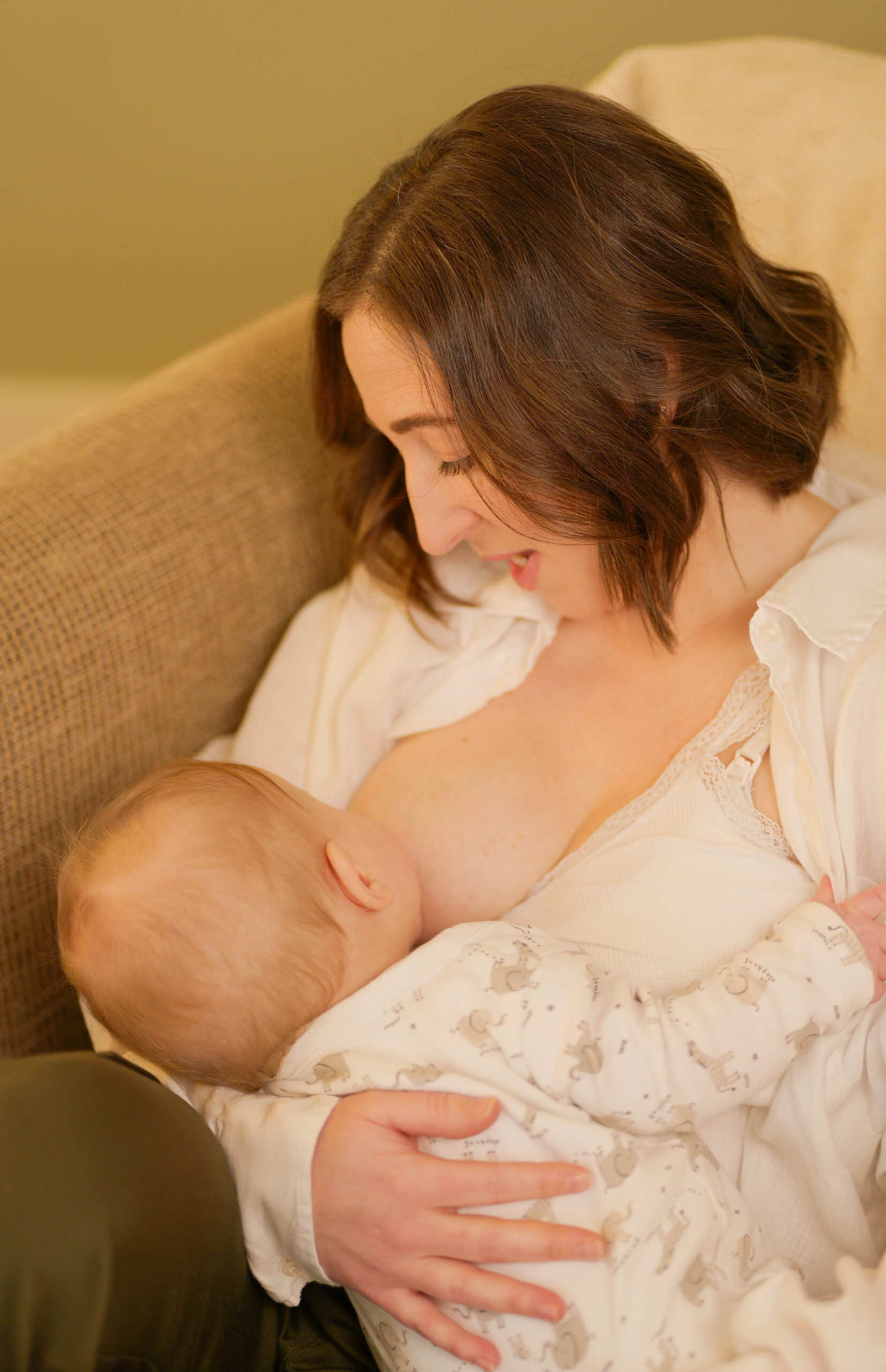Welcoming a newborn into your life is a joyous, transformative experience, but it also comes with challenges, especially when it comes to sleep. For parents who are against traditional sleep training and support bed-sharing or co-sleeping, navigating newborn sleep can feel even more complex. However, understanding the latest evidence-based practices within the context of your values can help create a safe and nurturing sleep environment for your baby.
1. Newborn Sleep Patterns: The Basics
Newborns have a unique sleep cycle that differs significantly from adults. In the early weeks, babies typically sleep between 14 to 17 hours per day, often in short bursts of 2 to 4 hours at a time. This fragmented sleep pattern is normal and is largely driven by their need for frequent feeding, as their small stomachs can only hold so much milk at once.
Research indicates that newborns spend about 50% of their sleep time in active sleep (REM sleep) and 50% in quiet sleep (non-REM sleep). During active sleep, babies may move, twitch, and make noises—sometimes leading parents to think they’re waking up. Understanding that these movements are part of normal sleep can help you feel more at ease when co-sleeping or bed-sharing.
2. Safe Bed-Sharing and Co-Sleeping Practices
While mainstream advice often discourages bed-sharing due to concerns about sudden infant death syndrome (SIDS), many parents find that bed-sharing or co-sleeping aligns with their parenting philosophy, particularly for breastfeeding and bonding. Here’s how to do it safely:
- Ensure a Safe Sleep Space: If you choose to bed-share, ensure the bed is free of pillows, heavy blankets, and other items that could pose a suffocation risk. A firm mattress is essential, and both parents should avoid alcohol, smoking, or any substances that could impair alertness.
- Positioning Matters: Place your baby on their back to sleep, on a flat and firm surface, even when bed-sharing. Consider using a sidecar cot or a ‘next to me’ cot that attaches to your bed to keep your baby close while reducing risk.
- Avoid Overheating: Dress your baby in light sleep clothing and keep the room at a comfortable temperature. Overheating has been linked to an increased risk of SIDS, so keep the bedding light and avoid overdressing your baby.
- Breastfeeding Benefits: Bed-sharing can make nighttime breastfeeding more manageable, and breastfeeding itself has been associated with a lower risk of SIDS. Being close to your baby allows you to respond quickly to their needs, which can help regulate their breathing and body temperature.
- Please check out The Lullaby Trust Charity! https://thelullabytrust.org.uk
3. Gentle Sleep Practices Without Formal Sleep Training
For parents who are against traditional sleep training methods, such as letting a baby “cry it out,” there are gentle alternatives that respect both your baby’s needs and your family’s values.
- Responsive Parenting: Responding to your baby’s cries and cues is a cornerstone of gentle sleep practices. Rather than enforcing strict sleep schedules, focus on understanding and responding to your baby’s natural rhythms.
- Creating a Calm Sleep Environment: A calming bedtime routine can help signal to your baby that it’s time to sleep. Gentle activities like a warm bath, rocking, singing lullabies, or quietly reading a book together can become soothing rituals that ease your baby into sleep.
- Co-Regulation: Many parents find that co-sleeping allows for easier co-regulation, where your presence helps regulate your baby’s emotions, breathing, and heart rate. This can lead to a sense of security and better sleep for both you and your baby.
4. Navigating Sleep Regressions Naturally
Sleep regressions, such as those that often occur around 4 months, can be challenging. These periods are marked by changes in sleep patterns as your baby’s brain develops, leading to shorter naps, increased night waking, and difficulty settling down.
Rather than turning to sleep training, consider these gentle approaches:
- Maintain Your Routine: Stick to your calming bedtime routine as much as possible, even if sleep is disrupted. Consistency can help your baby adjust more quickly.
- Offer Extra Comfort: During regressions, your baby might need extra comfort and closeness. Co-sleeping or bed-sharing during these times can provide the reassurance they need to navigate this developmental phase.
- Embrace Flexibility: Understand that sleep regressions are temporary. Be flexible with your expectations and allow yourself and your baby grace during this time.
5. The Importance of Bonding and Connection
For many parents who choose bed-sharing and gentle sleep practices, the emotional bond and connection with their baby are paramount. Research supports the idea that close physical proximity during sleep can strengthen the parent-child bond, promote secure attachment, and support emotional development.
6. Cultural and Personal Considerations in Newborn Sleep
Sleep practices vary widely across cultures, and bed-sharing or co-sleeping is the norm in many parts of the world. If bed-sharing aligns with your cultural practices or personal beliefs, it’s important to balance these traditions with safety guidelines.
Discuss your sleep practices with your Health Visitor or GP to ensure they align with your baby’s safety while respecting your cultural values. Some families find that a mix of approaches—such as using a sidecar cot—allows them to balance safety and closeness.
7. When to Seek Support
While most sleep challenges can be managed with gentle, responsive practices, there may be times when additional support is needed. If your baby has difficulty sleeping, appears to be in pain, or has trouble breathing during sleep, consult with a doctor. Your GP, or out of hours- 111 are great for advice in a NON emergency. Always call 999 if it is an emergency. Sometimes, sleep issues may signal underlying health conditions that require attention.
Conclusion
Understanding newborn sleep behaviours through an evidence-based lens, while also honouring your values around bed-sharing and gentle sleep practices, can help you create a nurturing sleep environment for your baby. By focusing on safety, connection, and responsiveness, you can support your baby’s sleep in a way that feels right for your family. Remember, every baby is different, and the best approach is the one that works for you and your baby.


